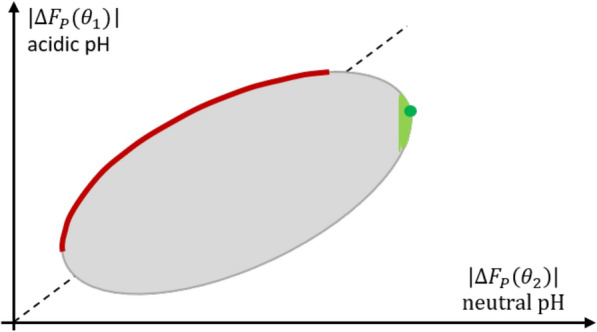Fig. 1.

Illustration of the multi-objective optimal affinity approach proposed herein in contrast to the standard optimal affinity approach: Under the assumption that the binding free energy values and of all ligands of interest fill the grey shaded area including its boundaries, the standard optimal affinity approach (3) would identify the ligand indicated by the green ball, or, in its relaxed version (2), the green shaded area close to the ball. In contrast, the multi-objective optimal affinity approach (6) would identify the ligands in the red area of the boundary giving higher importance to the binding affinity at acidic pH
